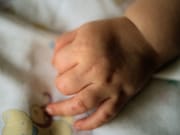
THURSDAY, Feb. 28, 2019 — They are among the rarest types of human beings — so-called “semi-identical” twins.
Now, doctors in Australia say they’ve identified the world’s second known set of these twins, born from an egg fertilized by two sperm.
Semi-identical twins (sesquizygotic) are classed as a third type of twin, in addition to identical and fraternal twins.
The newly identified set of twins are also the first to be identified as semi-identical during pregnancy. The boy and girl are now 4 years old. Researchers say they’re unusual because they share 100 percent of their mother’s DNA, but only some of their father’s.
“It is likely the mother’s egg was fertilized simultaneously by two of the father’s sperm before dividing,” said Dr. Nicholas Fisk, a professor and maternal-fetal medicine specialist from the University of New South Wales in Sydney. He led the team that cared for the mother and twins in 2014.
An ultrasound at six weeks suggested the mother was expecting identical twins, but another at 14 weeks revealed they were male and female, Fisk said.
Identical twins result when cells from a single egg fertilized by a single sperm divide into two. These twins are the same sex and have identical DNA.
Fraternal twins develop from separate eggs, each egg fertilized by its own sperm.
When two sperm fertilize a single egg, however, three sets of chromosomes appear, one from the mother and two from the father. Usually, these embryos don’t survive.
In this case, it appears that the fertilized egg equally divided the three sets of chromosomes into groups of cells that split into two, creating twins, according to clinical geneticist Michael Gabbett, from Queensland University of Technology (QUT). He worked alongside Fisk.
Semi-identical twins were first reported in the United States in 2007. Doctors identified them when one baby had ambiguous sex organs. They were identical on their mother’s side but shared about half of their father’s DNA.
To see if this phenomenon had occurred elsewhere, the Australian researchers looked at genetic data from 968 fraternal twins and their parents. Neither that data nor large global twin studies found other semi-identical twins.
“We know this is an exceptional case of semi-identical twins,” Fisk said in a QUT news release. “While doctors may keep this in mind in apparently identical twins, its rarity means there is no case for routine genetic testing.”
Fisk and Gabbett reported the case Feb. 27 in the New England Journal of Medicine.
More information
The March of Dimes offers more information about twins and multiple births.

© 2019 HealthDay. All rights reserved.
Posted: February 2019
